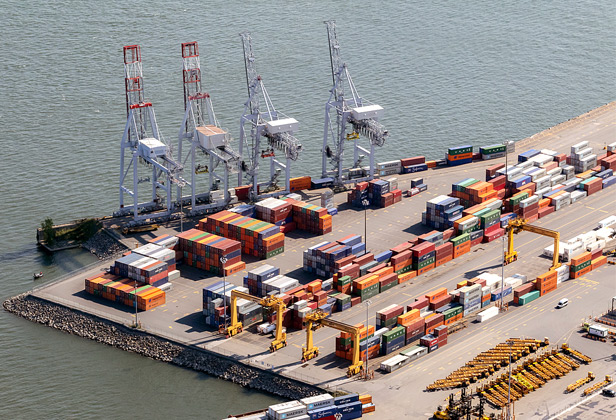CANADIAN NEWS April 22, 2021
Talks at a Standstill at the Port of Montreal
Workers at the shipping hub have already implemented a partial strike.
Negotiations between longshoremen and shipowners at the Port of Montreal are at a standstill, and that could lead to a full strike at Canada’s second-largest port.

The Canadian Union of Public Employees (CUPE, Local 375), which represents the dockworkers, and the Maritime Employers Association (MEA), representing shipowners and operators, have been engaged in ongoing negotiations, primarily over working hours and commensurate pay. Last week, workers began a partial strike and haven’t been working overtime or on weekends since then. It’s in protest of the MEA pulling guaranteed base pay regardless of hours worked.
The MEA said the decision was the direct result of decreased tonnage at the port because of ongoing labor uncertainty there. The CUPE doesn’t agree with the cause of slowed traffic, though it offered on April 21 to end the partial strike if the MEA reinstates compensation. The MEA has refused to do so.
Already, the breakdown in negotiations and partial strike are causing ships to be rerouted and further supply chain disruption.
“After an 11% decline in volumes in March, the Port now has to deal with decisions that will drop its port capacity by close to 30%,” wrote Martin Imbleau, president and CEO of the Montreal Port Authority, in an open letter. “For once in its history, the Port of Montreal is posting results that pale in comparison to its competitors on the U.S. East Coast, which are enjoying significant growth.”
The port sees $100 billion (Canadian) worth of goods annually, wrote Imbleau, and about $275 million a day.
Labor concerns at ports are particularly challenging to contend with and have far-reaching effects, said Sara Slinn, a Canadian labor expert and professor at York University in Toronto. “If you have one strike by a group of workers, it freezes up the entire port,” she told American Shipper. “And there’s a lot of money at stake.”
It’s been a tough year for supply chains around the world, particularly with congested ports and numerous ships at anchor waiting to dock and unload. Ships are already being rerouted from Montreal to other East Coast ports, which adds to the existing strain.
“A strike [at Montreal] would lead to an increase in costs for manufacturers because they’ll need to divert ships to different ports such as those at St. John and the northeastern U.S.,” Teri Shern, co-founder of steel storage container company Conex Boxes, told ASI Canada. “There will also likely be adjustments to methods of transportation, putting more stress on the rail travel industry and adding to the cost even further. As a result, company budgets will need to be adjusted. They may not be able to distribute as much stock and businesses may struggle to keep up with demand.”
Hartley Hyman, president of Toba Sportswear (asi/91408), is in Winnipeg, but he’s keeping an eye on what happens at the port to the east. “We don’t bring in any items directly through the Port of Montreal,” he said. “But my understanding is that T-shirts, fleece and other garments coming from Honduras and Bangladesh, for example, do go through there. If there are delays, then brands like Gildan, Fruit of the Loom, JERZEES and Russell Athletics could be affected.”
To keep disruption to a minimum, Hyman said he always keeps several months’ worth of stock on hand. “We also regularly draw inventory from U.S.-based distribution centers, and we could increase that if need be,” he said.
The port uncertainty comes as Ontario grapples with a third wave of COVID, spurred by increasing numbers of variant cases, and a third province-wide lockdown. British Columbia is also seeing more hospitalizations, and officials there have announced new travel restrictions and lowered the vaccine eligibility age to 40 to slow spread.
The government also released its 2021 budget this week, focusing on COVID relief and economic stimulus as the country attempts to recover from long-term virus shutdowns. The budget includes proposals for extensions to COVID economic aid; for example, the Canada Emergency Wage Subsidy and Emergency Rent Subsidy will both be extended from June 6 to Sept. 21.
There are also Employment Insurance changes, childcare funding, investments in skills and training and a $15 federal minimum wage. In all, it adds up to $101.4 billion in new spending.
